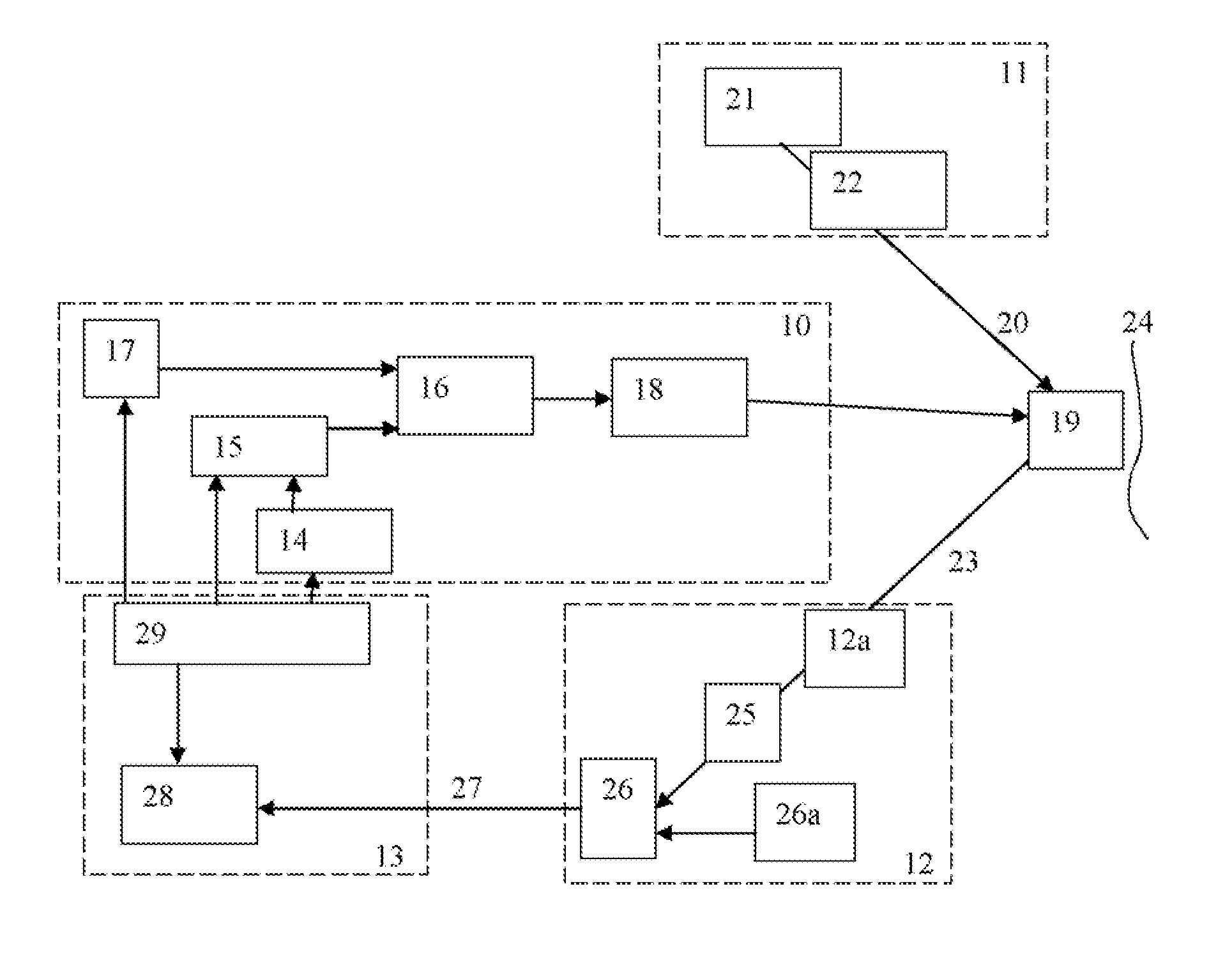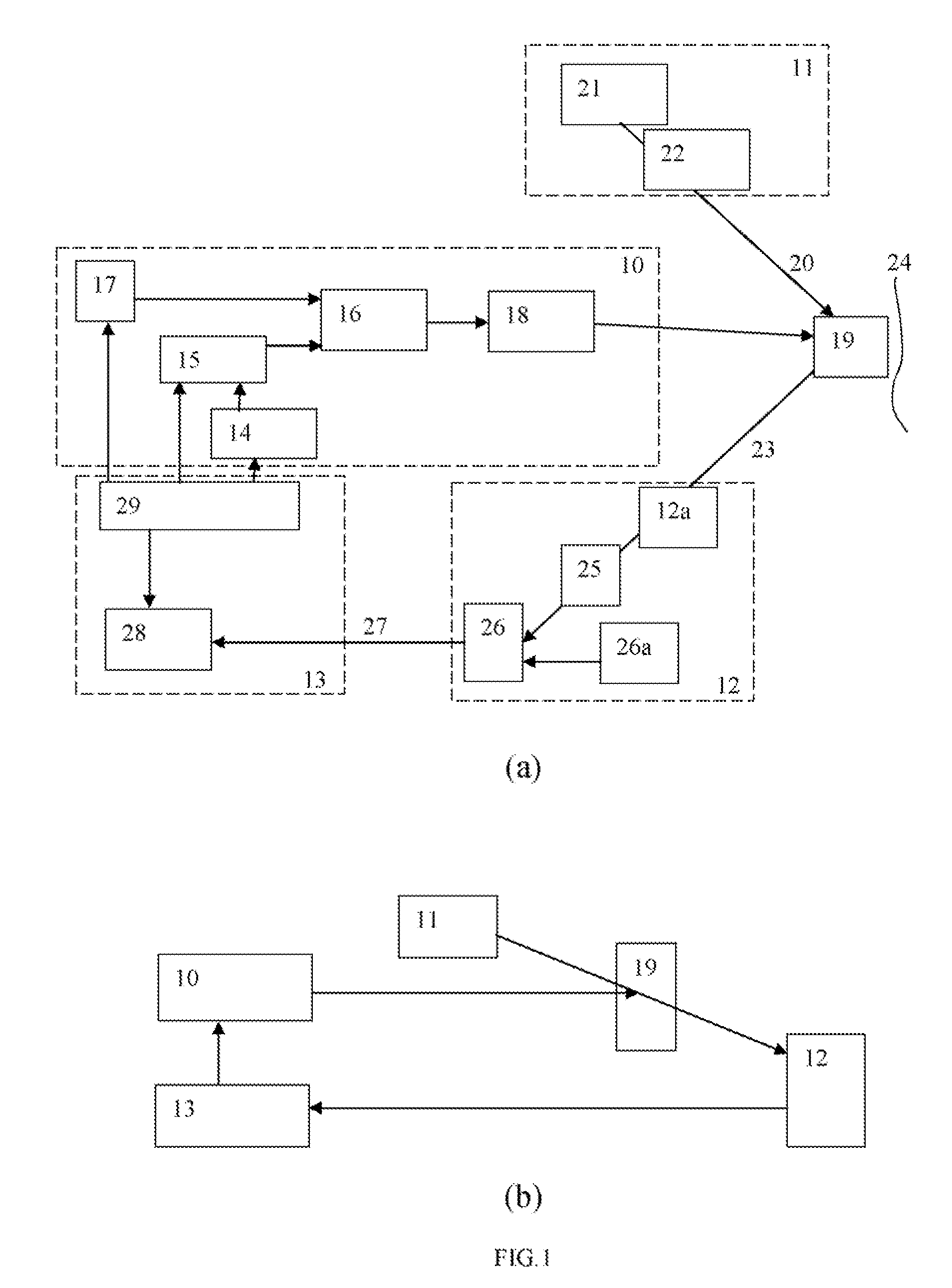High sensitivity coherent photothermal interferometric system and method for chemical detection
a photothermal interferometric and high-sensitivity technology, applied in the field of photothermal interferometric spectroscopy devices, can solve the problems that the beam spreading and scintillation induced by atmospheric turbulence cannot be compensated
- Summary
- Abstract
- Description
- Claims
- Application Information
AI Technical Summary
Benefits of technology
Problems solved by technology
Method used
Image
Examples
Embodiment Construction
[0021] Co-pending U.S. Patent application Publ. No. 20050105099 discloses an optical device which is a part of the block diagram shown in FIG. 1(a), where 10 is a unit that combines strobe generation and targeting, 11 is the unit for optical probe beam generation and targeting, 12 is a signal detection and recovery block, and 13 is electronics control and processing block. The system operates as follows: the strobe laser 14 feeds integrated wideband Li2NbO3 Optical Comb Generator 15. The comb generator 15 enables the programming and launching of very short pulses (pico-seconds) that are ‘pre-shaped’ in the frequency domain to match the absorption spectra of the substance under study, such as explosives or another. In the preferred embodiment the pre-shaped strobe is fed to one of the non-linear ZnSe optical mixer 16 while its other input is coupled with the Optical Parametric Oscillator (OPO) 17. The output of the mixer 16 results in strobe-spectra at the applicable absorption regio...
PUM
 Login to View More
Login to View More Abstract
Description
Claims
Application Information
 Login to View More
Login to View More - R&D
- Intellectual Property
- Life Sciences
- Materials
- Tech Scout
- Unparalleled Data Quality
- Higher Quality Content
- 60% Fewer Hallucinations
Browse by: Latest US Patents, China's latest patents, Technical Efficacy Thesaurus, Application Domain, Technology Topic, Popular Technical Reports.
© 2025 PatSnap. All rights reserved.Legal|Privacy policy|Modern Slavery Act Transparency Statement|Sitemap|About US| Contact US: help@patsnap.com



